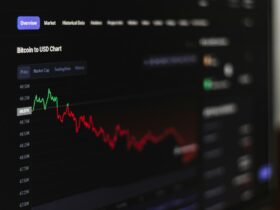As the holiday season approaches, the cryptocurrency community is abuzz with excitement about the annual phenomenon known as the “Santa rally.”
There is the potential for a substantial market rally this year, driven by a confluence of factors such as a potential surge in institutional investment, regulatory clarity and temporary improvement in microeconomic conditions.
This week, The Federal Open Market Committee (FOMC) concluded its penultimate meeting for 2023, opting to maintain the current interest rates.
US inflation has shown a significant decrease, dropping from a high of 9.1% in June 2022 to its current rate of 3.7%, largely attributed to the Federal Reserve’s assertive interest rate hikes. These actions brought the Federal Funds Rate to a range of 5.25-5.5%, marking its highest level since 2001, yet it remains relatively moderate when viewed in the context of the last century
Despite the undeniable success of this campaign in curbing inflation, there is a prevailing concern about the possibility of a recession being sparked by the extended period of elevated interest rates.
As a result, the Federal Reserve appears to be adopting a more cautious stance concerning the management of inflation, and it might exercise restraint when it comes to further increases in interest rates.
This evolving approach reflects a delicate balance that the Federal Reserve is striving to strike between taming inflation and safeguarding the broader economic landscape to avoid any unforeseen downturns. This shift in approach could potentially improve market sentiment and pave the way for a market rally toward the end of the year.
Surge in institutional investment
The substantial price spikes that marked the last bull market were mainly driven by a surge in investor confidence and a growing interest from institutional players. Major financial institutions and hedge funds began to see Bitcoin (BTC) not merely as a speculative asset but as a hedge against inflation and a potential store of value.
Household names like Square (SQ), MicroStrategy (MSTR) and Tesla (TSLA) made substantial Bitcoin acquisitions for their corporate treasuries, reinforcing this evolving narrative.
Additionally, the introduction of futures cryptocurrency ETFs and funds provided institutional investors with a more accessible entry into the market.
A Celent survey revealed that 91% of institutional investors are eager to invest in tokenized assets, underlining strong demand. The upcoming season may witness an even larger influx of institutional capital into the crypto domain, with entities like MicroStrategy expanding their crypto holdings.
Research by EY-Parthenon suggests that most institutional investors believe in the enduring value of blockchain technology and crypto assets, leading them to plan substantial digital asset investments over the next few years.

What could inject further momentum into the economic landscape is the anticipated approval of the first US-based Bitcoin spot exchange-traded fund (ETF), which is expected to happen before January 10, as predicted by J.P. Morgan.
The anticipation surrounding this potential development has been intensified by recent speculations about the approval of BlackRock’s ETF application, resulting in a resurgence of Bitcoin’s price to $35,000. If this approval materializes, it has the potential to trigger a price surge in the cryptocurrency market, even though it may be of a temporary nature.
Regulatory clarity
As the cryptocurrency market gained momentum in 2020, regulators worldwide took notice. Some countries imposed outright bans, while others adopted a more measured approach by developing regulatory frameworks to oversee digital assets.
In 2021, US regulatory developments, particularly those concerning the SEC’s stance on cryptocurrencies, were central to global discussions. The year saw significant regulatory developments, with various nations establishing precise legislative frameworks and rules governing cryptocurrencies, ICOs and DeFi platforms.
The drive to create central bank digital currencies (CBDCs) also gained traction. This year, the European Union enacted the Markets in Crypto-Assets (MiCA) regulatory framework, ushering in a new era of comprehensive crypto regulations within the region.
In a pivotal moment, a US Circuit Judge affirmed Ripple’s compliance with the law regarding XRP sales on public exchanges, marking a legal victory for the cryptocurrency sector.
However, the judge clarified that Ripple had violated securities laws in its offerings to institutional buyers. Furthermore, members of the United States Congress advocated for the approval of spot Bitcoin listings by the SEC Chair.
Furthermore, the US SEC has initiated two major lawsuits against Binance and Coinbase. Irrespective of the eventual legal outcomes, these actions are poised to provide a greater level of regulatory clarity and be utilised as the cases that define how cryptocurrencies are regulated in the US.
While the resolution of these legal cases may not be imminent by the end of the year, any noteworthy developments in the proceedings could potentially trigger a price surge in the cryptocurrency market.
The cryptocurrency community eagerly awaits the potential introduction of spot Bitcoin ETFs, improving economic factors and clearer regulatory frameworks. Amid these positive factors, the cryptocurrency market is poised for an eventful holiday season, with a “Santa rally” possibly in store.
Disclaimer: The content on this site should not be considered investment advice. Investing is speculative. When investing, your capital is at risk.
















Leave a Reply